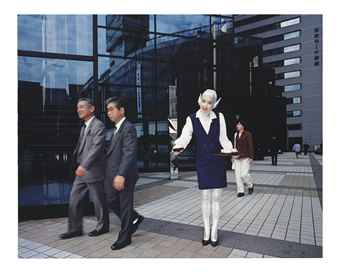People
Prince William Participates in Tokyo Tea Ceremony


Christie Chu

Prince William arrived in Japan Thursday evening, starting his seven-day tour of the Far East. After being greeted by 200 VIPS and local school children, the Duke of Cambridge then proceeded to a tea house, since his first protocol as a guest of Japan was to participate in the ancient tradition of the tea ceremony. The ritual is so sacred that the media isn’t allowed to witness the motions; screen doors were slid to block the tea brewing and pouring. To get an idea of the ceremony, albeit an artful one, you might check out the opening of Matthew Barney’s Drawing Restraint 9 (2006), featuring Bjork, or Mariko Mori’s Tea Ceremony III (1995), for which the artist played an interplanetary geisha who serves tea to businessmen.
This past December, William and wife Kate (now pregnant with their second child—see How Will Artists React to Second Royal Baby) visited New York to see art and take in a Nets game with Beyoncé (see Prince William and Kate Middleton to See Beyoncé and Art in New York).
During Prince William’s ceremony, he sipped powdered green Usucha tea, or “thin tea,” made by grand master Genshitsu Sen, whose ancestors were the originators of the philosophy and art of chado (or way of tea). The ceremony guides participants to achieve harmony, purity, respect, and tranquility.

Mariko Mori, Tea Ceremony III, (1995).
Courtesy of Christie’s
Performed for the Duke of Cambridge in a tea house built more than 350 years ago in Hamarikyu Garden, the ceremony took place at the same venue where Prince Albert first set foot when he visited Japan in 1869.
For the rest of his Japan trip, Prince William will be escorted by Japanese prime minister Shinzo Abe, who is committed to restarting all the nuclear power plants that were destroyed in 2011’s Fukushima nuclear disaster (see Artists to Serve Radioactive Soup at Frieze London). Strategically, the prince will not be stopping in the village where about 80,000 people, who were driven out of their home after the disaster, are still living today.